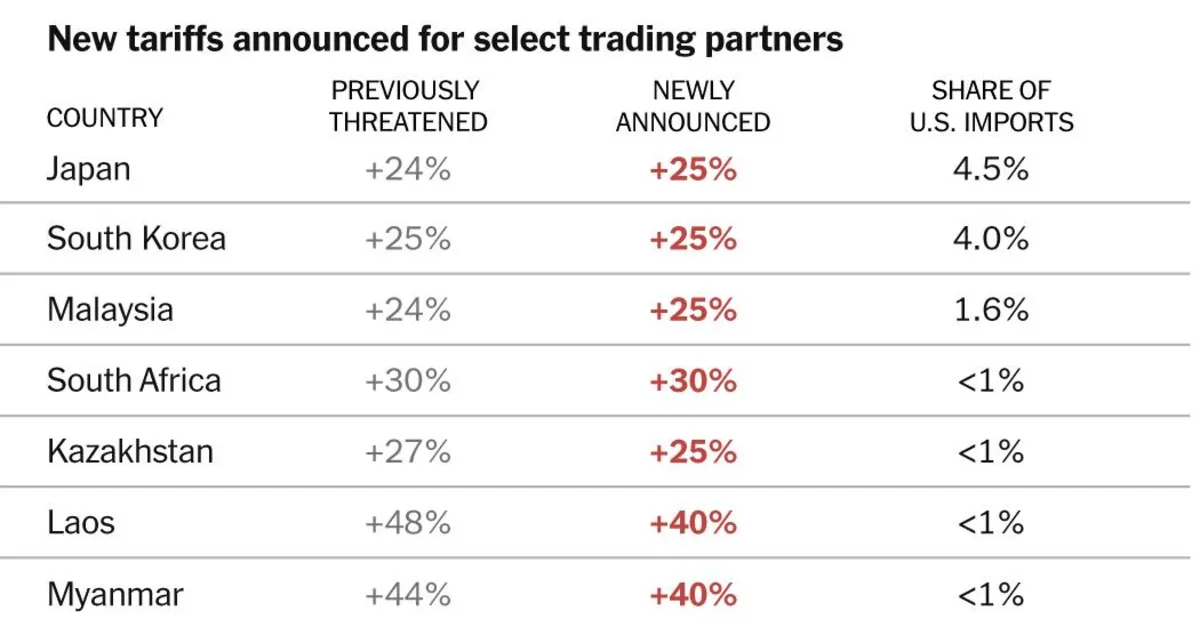
On Monday, President Trump informed Japan, South Korea, and 12 other nations that they will face tariffs of at least 25 percent starting from August 1 unless they can negotiate new trade deals with the United States. This announcement marks a significant escalation in Mr. Trump’s approach to international trade, as he revives his trade brinkmanship strategy aimed at reshaping global trade relationships.
The newly announced tariff rates were communicated through letters sent to the leaders of these nations and were also shared via social media platforms. This development signals a return to aggressive trade policies that have characterized the Trump administration's approach, with further threats to other nations anticipated throughout the week. The new tariffs effectively replace the previously proposed high duties introduced in April, which were initially paused for a 90-day period to allow for potential trade negotiations.
Despite the administration's efforts, there has been minimal progress on what an official had described as a campaign to secure "90 deals in 90 days." With the deadline approaching on Wednesday, President Trump extended the initial pause on tariffs by signing an executive order on Monday. This move aims to provide additional time for negotiations while notifying countries about the impending new taxes on their exports to the United States.
The initial batch of letters regarding the new tariffs went out to Japan, South Korea, Malaysia, South Africa, Kazakhstan, Laos, Myanmar, Bosnia and Herzegovina, Serbia, Cambodia, Bangladesh, Indonesia, Tunisia, and Thailand. Both Japan and South Korea, which account for approximately 4 percent of U.S. imports, will face the 25 percent tariff starting August 1. Meanwhile, Thailand will incur a higher rate of 36 percent, and Bangladesh will see a 35 percent tariff.
President Trump has warned that tariff rates could rise even higher if any of the affected countries retaliate with their own import taxes or attempt to circumvent U.S. duties by shipping goods through third-party nations. As the week progresses, the White House is expected to send additional letters to other countries, some of which may also be subjected to the tariffs initially outlined by the president in April.
This recent announcement underscores the ongoing volatility in international trade, as nations scramble to negotiate favorable terms to avoid steep tariffs. The implications of these new tariffs could have significant effects on global trade dynamics in the coming months.